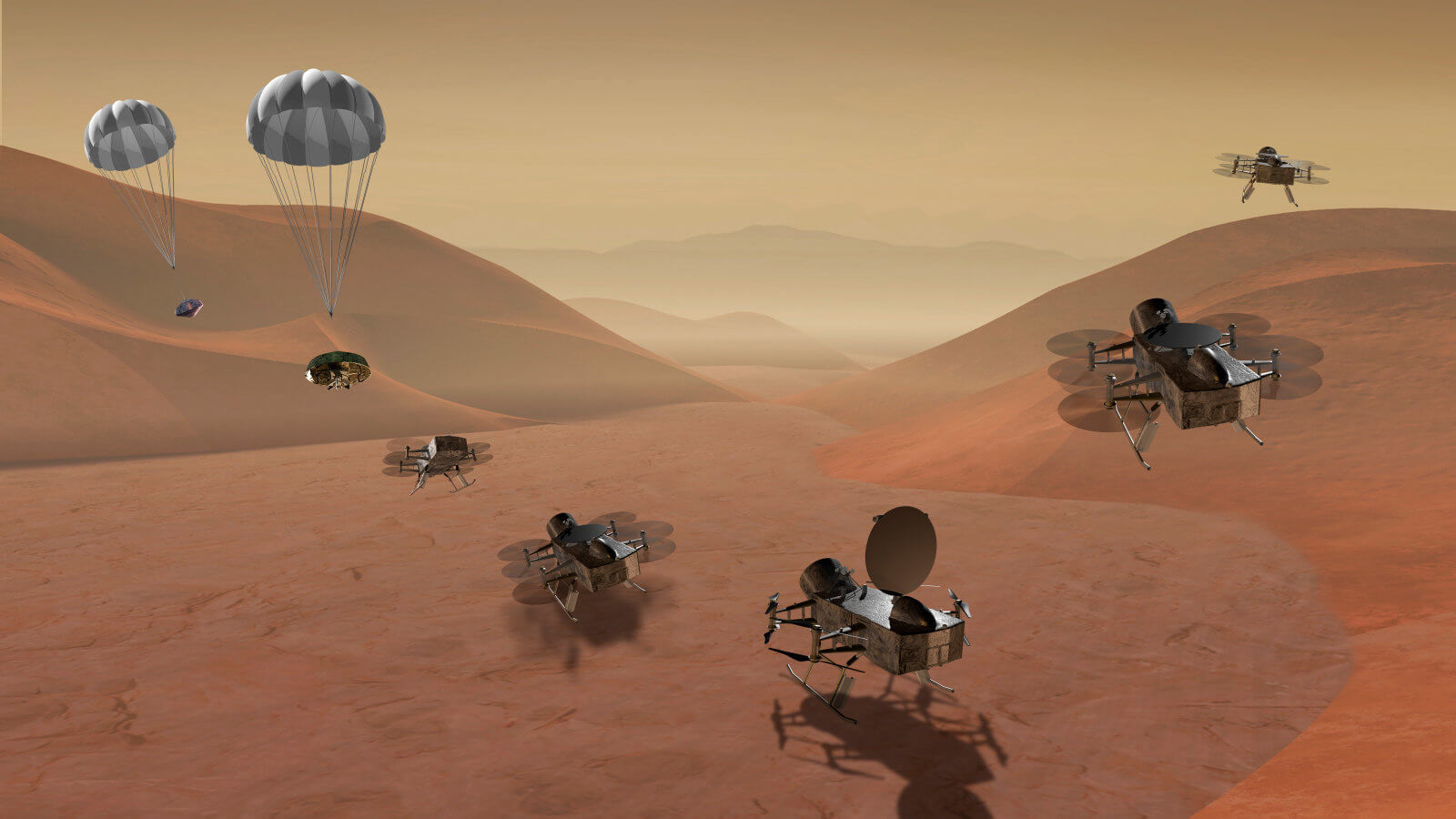Something to look forward to: Yesterday, NASA shared the details of its next big mission to explore our Solar System, called Dragonfly. A drone lander mission to Titan, Saturn's largest moon which the space agency says is unlike any other place in our Solar System and is similar to how the Earth was in its early days.
The richly organic world of Titan is the next destination for NASA's newly announced Dragonfly mission. The drone powered by 8 rotors will begin its flight in 2026 and land on Saturn's moon in 2034 after travelling a distance of 840 million miles. Taking advantage of Titan's dense atmosphere, which is 4 times denser than Earth, the rotorcraft will fly to dozens of locations helped by 13 years worth of data from the Cassini spacecraft that met its fate 2 years ago.
The drone will look for "prebiotic chemical processes common on both Titan and Earth," and marks the first time in NASA's history in which it'll be using a multi-rotor vehicle for scientific study on another planet. It will also "become the first vehicle ever to fly its entire science payload to new places for repeateable and targeted access to surface materials."
BIG NEWS: The next @NASASolarSystem mission is... #Dragonfly - a rotorcraft lander mission to Saturn's largest moon Titan. This ocean world is the only moon in our solar system with a dense atmosphere & we're so excited to see what Dragonfly discovers: https://t.co/whePqbuGBq pic.twitter.com/BQdMhSZfgP
--- Jim Bridenstine (@JimBridenstine) June 27, 2019
The fourth mission selected as part of the agency's NEW Frontiers program that includes the New Horizon mission to Pluto and the Kuiper Belt, Jupiter's Juno and the Bennu orbiting OSIRIS-REx, is being led by Elizabeth Turtle of the Johns Hopkins University Applied Physics Laboratory. These programs are capped at $1 billion each and selected from a competition held among multiple government and academic institutions.
Upon landing on Titan's surface, the drone will spend 2.7 years as part of its baseline mission in which it will "explore diverse environments from organic dunes to the floor of an impact crater where liquid water and complex organic materials key to life once existed together for possibly tens of thousands of years."

During its baseline mission, Dragonfly will be capable of flying over Titan's surface at about 20mph (32.1 km/h) reaching altitudes of up to 2 miles (3.2 km), where a single day goes by in about 16 Earth days. Upon reaching a low-altitude impact crater called Selk, the baseline mission will conclude. "We know this area quite well, there's a lot of data from different instruments in this region," says Elizabeth. "We will take images with both downward-looking cameras along the ground track underneath Dragonfly as we fly over the surface, as well as forward-looking cameras, so we'll be able to look out toward the horizon as well."
Titan's atmosphere is nitrogen-based like Earth but unlike our home, it has clouds and rain of methane. "The moon's weather and surface processes have combined complex organics, energy, and water similar to those that may have sparked life on our planet."
Appreciating the New Frontiers program for its transformation in the understanding of our Solar System, director of NASA's Planetary Science Division, Lori Glaze, highlighted achievements of the previous and on-going missions with Dragonfly which will "add Titan to the list of enigmatic worlds NASA will explore."
Illustration Credit: Associated Press, Titan Image: NASA
